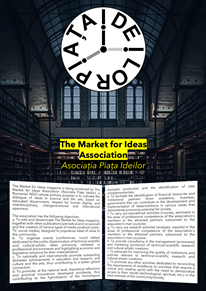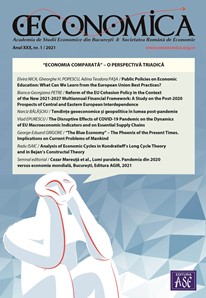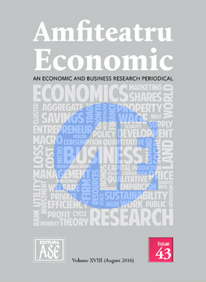
Pablo Neruda – Poetry, Polities, Peace Masters of Diplomacy (III)
One of the greatest poets that have ever lived in the Latin America was none other than the Chilean Pablo Neruda (photo: right) born under the name Ricardo Eliécer Neftalí Reyes Basoalto. He was born in Parral, Chile on July 12, 1904. His father, Jose del Carmen, was a railroad worker, and his mother, Rosa Neftali, was a teacher. Shortly after giving birth to her son, she passed away. Two years after his mother's death, the family moved to Temuco where his father remarried. As for Neruda, he started writing poetry at the age of 10. His father, being an ordinary worker, failed to understand the talent that his son had, so he never encouraged him to write and never cared about his burgeoning talent.
How the early life of Pablo Neruda shaped today’s world
The young poet began to publish his poems under the pseudonym Pablo Neruda, a name he legally adopted in 1946. He graduated from the Temuco Boys’ High School in 1920, during which time he was always encouraged by Gabriela Mistral, director of the girls’ school of Temuco, to practice writing and abandon shyness and loneliness. His first publications appeared in local newspapers and later in magazines published in Santiago. Here he continued his studies by becoming a French teacher and at the same time experienced hunger and loneliness.
His first book of poems was published in 1923 under the title Crepusculario. His second book of poems, published in 1924 under the title Twenty Love Poems and a Song of Despair, was inspired by an unhappy love affair, and became an instant success. In a short time, he abandoned his French studies and his teaching career, and began to focus on his art. In time, he realized that the art of writing poetry was not a constant source of income, so he made several hasty translations from several foreign languages, publishing articles in magazines and newspapers. Neruda wrote in a variety of styles such as surrealistic poems, historical epics, erotically charged love poems, and political manifestos. It was said that he charged his soul with energy to write famous poems and achieve a good union between pen and paper through the green ink he wrote with, his personal color of hope (Frangsmyr T. 1993).
The less famous part of Neruda’s journey – the diplomatic career
In the 20th century, many artists and poets from the Latin America felt the desperate need to discover the magical continent of Europe. Pablo Neruda was one of them. Since travelling abroad and the accommodation implied enormous costs, one person would not have been able to afford it unless they had a better alternative. Obtaining a diplomatic passport was the alternative. In order to see his wish come true, Pablo had to fulfill his duties in Rangoon, Burma, where he was appointed consul in 1927. Unfortunately, the location was nowhere near where Pablo dreamed of.
His trip as a newly appointed consul started on the 14th of June, 1927. Once he settled in the new location that would be his home for just one year, he started feeling “the loneliness of a stranger transplanted into a violent and strange world”. For Neruda, this new change brought a lot of emptiness and sorrow upon his soul. One year later, he was transferred to Colombo, Ceylon. During his stay there, he started writing one of his books, Residence on Earth (spanish: Residencia en la Tierra), where he opened up about how tormented he felt during this time. Two years later, in 1930, he moved to another location as consul. More exactly in Batavia, Java (now Jakarta), where he met the woman he would marry the same year, Marie Antoinette Hageenar.
In 1932, once Neruda had returned to his homeland, after finishing a long trip, he rejoined his passion - the literary scene. In 1933, he went to Buenos Aires, Argentina, as a consul. During this time, he met Federico García Lorca. One year later, his dream has finally come true. He stepped on Spanish soil for the very first time as a consul in Barcelona. In 1935, he transferred to Madrid. The life he had in Spain had a meaningful impact on the evolution of his poetry, not only because he shared the Generation of 1927 with many other great Spanish personalities, but most importantly he was a witness to a key moment of literary renewal and the flourishing of Spanish poetry. "It is not Neruda who influences Spain, but Spain in Neruda'', states Volodia Teitelboim (2003) in his book titled Neruda.
La Guerra civil española and everything that came after it
When the horrendous Spanish Civil War broke out in 1936, the situation forced him to pick a side. The Nationalists had García Lorca executed, while Neruda traveled in and out of Spain in order to gather money and mobilize support for the Republicans. Because Neruda chose to maintain an antifascist position, the Chilean government had to remove him from his consulate office. When he returned home, in Chile, he brought alongside with him a new workpaper, “España en el corazón” (English: Spain in my heart), in which he expressed his convictions regarding the war. Moreover, he entered his country’s political life, doing two things at once: giving lectures and poetry readings while also defending Republican Spain and Chile’s new centre-left government.
In 1939, he obtained a new special consul position for Spanish immigration in Paris where he supervised the migration to his homeland of many Spanish Republicans who were defeated and escaped to seek shelter in France. Thanks to him, many arrangements were made in favor of the Spanish refugees.
In the following years, he dedicated himself to politics being elected a Senator and joined the Communist Party in Chile, which cost him greatly because he was exiled by the government of Gabriel González Videla once communism was declared illegal. He had to flee to Argentina. At the time, Argentina’s government made the country a risky place to remain in. Neruda had to use the Guatemalan passport of a friend he resembled so he could travel by ship to France, arriving in 1949. The famous painter, Pablo Picasso, helped his friend to renew his passport, giving him the opportunity to remain in Europe. After receiving amnesty by the newly elected Carlos Ibanez, Neruda returned to Chile in 1952 and was awarded the Stalin Peace Prize in 1953. Unlike some who distanced themselves from Communism when the atrocities of WWII were revealed, Neruda remained a true believer in the philosophy’s ability to bring about change for the good of the people.
The last time he was part of the Chilean Foreign Service was as ambassador in Paris from March 1971 until the end of 1972, at which point he resigned as ambassador. In 1971, while he was already terminally ill, Pablo found out that he had been awarded the most desired prize by any poet, The Nobel Prize for Literature. Neruda's death reverberated around the word, and the permission that his funeral be transformed into a public event was denied. However, thousands of grieving Chileans crowded the street for this legend and he was regarded as the greatest Latin American poet.
The life of Pablo Neruda in a nutshell
The writer-diplomat tradition has been critical over the years for the development of many European and Latin American writers, perhaps especially among Latin American countries, where a collection of writers like Pablo Neruda were representatives so mighty that one might assume there was a magical current uniting diplomatic talent and literature.
First of all, the profession of diplomacy perhaps more than any other vocation has a large impact on the life of an artist because it can be a source of creativity due to the unique opportunities to become immersed in other cultures. Moreover, the diplomat is an important conduit in the interpretation of the policies of one country to another and the promotion of understanding between cultures. Thus, the diplomat who pursues cultural interests outside of his official duties will find significates opportunities, apart from the obvious one of foreign travel and the motivation that every change of environment brings with it. In the logic of this idea, Neruda had his talent for poetry before he embarked on a diplomatic career that gave him subjects from faraway lands to write about.
Secondly, the careful and sensitive use of language as a form of communication in speech and in writing is crucial for diplomats. For Neruda who spoke Spanish, French and English it was undoubtedly an asset in his diplomatic career, a fluency in international languages being even today a basic requirement. Despite the cultural openness, no diplomat can succeed unless he is deeply rooted in his country and his culture, Neruda, both as a diplomat and a creative writer, remaining rooted with his soul his entire life in Chile.
Moreover, it is important to mention that Neruda’s legacy was directly shaped and influenced by the historical events from 20th century in which he played a part. The narrative thread as a diplomat began in his early youth, during Chile’s revolutionary student movement, in which he played the role of an activist-writer being also the voice of a young generation. In his final years, he determinedly defended Chile against U.S. intervention and, in his capacity as ambassador to France, Neruda represented Salvador Allende’s historic socialist government. All this time, his relationship to readers and the ideas of his writing were marked by periods of violent political crisis and authoritarianism.
In conclusion, the power of Neruda’s poetry is proven by its endurance, in how often people bring to mind his work as an instrument to inspire, to awaken, to sustain. In San Francisco, during the lead-up to the 2003 invasion of Iraq, Neruda’s words and the message sent by the writer-diplomat about freedom of speech were draped on banners all over the streets. Nearly ten years later, Neruda’s words “you can cut all the flowers, but you can’t stop spring” were spray-painted on the streets of Cairo during the Arab Spring by Egyptian art historian Bahia Shehab.
References
- Biblioteca Nacional de Chile, Carrea diplomática – Pablo Neruda (1904-1973), accessed online at the following link: http://www.memoriachilena.gob.cl/602/w3-article-100857.html
- Caroll, C., Bibliography of Pablo Neruda, Chilean Poet and Diplomat, , accessed online at the following link: https://www.thoughtco.com/biography-of-pablo-neruda-chilean-poet-4843724
- Echevarría, R.G, Pablo Neruda – Chilean poet, accessed online at the following link : https://www.britannica.com/biography/Pablo-Neruda
- Frängsmyr, T., Pablo Neruda Biographical, World Scientific Publishing Co., Singapore, 1993, accessed online at the following link: https://www.nobelprize.org/prizes/literature/1971/neruda/biographical/
- Neruda, P., Memoirs, 1974
- Neruda, Pablo, Then come back the lost Neruda Poems, Bloodaxe Book, 2017
- Southern Explorations, Politics in the Life of Pablo Neruda, accessed online at the following link: https://www.southernexplorations.com/politics-life-pablo-neruda










